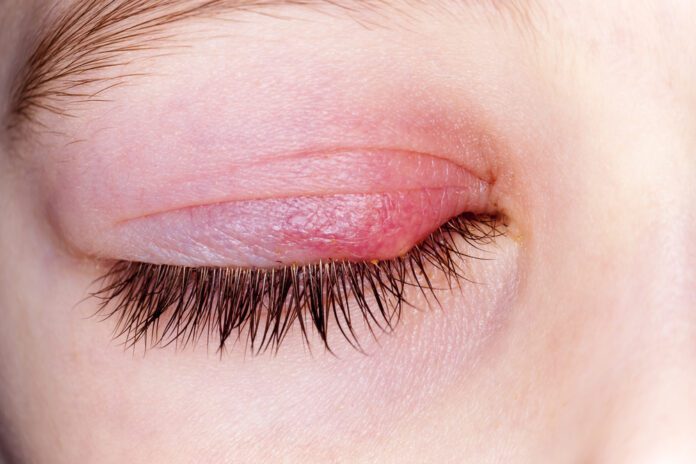Overview
Blepharitis is inflamed, irritated, itchy, and reddened eyelids. It most often occurs where the eyelashes grow. Dandruff-like debris builds up at the base of the eyelashes as well.
Commonly Associated With
Eyelid inflammation; Meibomian gland dysfunction
Cause
The exact cause of blepharitis is unknown. It is thought to be due to:
An overgrowth of bacteria.
A decrease or breakdown of the normal oils produced by the eyelid.
Blepharitis is more likely to be seen in people with:
A skin condition called seborrheic dermatitis or seborrhea. This problem involves the scalp, eyebrows, eyelids, skin behind the ears, and the creases of the nose.
Allergies that affect the eyelashes (less common).
Excess growth of the bacteria that are normally found on the skin.
Rosacea, which is a skin condition that causes a red rash on the face.
Symptoms
Symptoms include:
Red, irritated eyelids
Scales that stick to the base of the eyelashes
Burning feeling in the eyelids
Crusting, itching, and swelling of the eyelids
You may feel like you have sand or dust in your eye when you blink. Sometimes, the eyelashes may fall out. The eyelids may become scarred if the condition continues long-term.
Exams & Tests
The health care provider can most often make the diagnosis by looking at the eyelids during an eye exam. Special photos of the glands that produce oil for the eyelids can be taken to see if they are healthy or not.
Treatment
Cleaning the edges of the eyelid every day will help remove excess bacteria and oil. Your provider might recommend using baby shampoo or special cleansers. Using an antibiotic ointment on the eyelid or taking antibiotic pills may help treat the problem. It may also help to take fish oil supplements.
If you have blepharitis:
Apply warm compresses to your eyes for 5 minutes, at least 2 times per day.
After the warm compresses, gently rub a solution of warm water and no-tears baby shampoo along your eyelid, where the lash meets the lid, using a cotton swab.
A device has recently been developed that can warm and massage the eyelids to increase the flow of oil from the glands. The role of this device remains unclear.
A drug-containing hypochlorous acid, which is sprayed onto the eyelids, has been shown to be helpful in certain cases of blepharitis, especially when rosacea is also present.
Source
Courtesy of MedlinePlus from the National Library of Medicine



